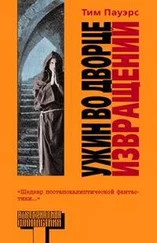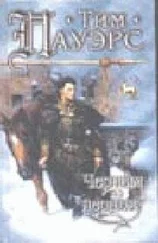All that I have done has been to keep the Church alive.
The fact that my actions were utterly necessary, that the man I killed absolved me even as I completed the trigger stroke, was cold comfort. I planned to tell my confessor, Cardinal Crivetto, even though I had already been shriven.
However, he had responsibilities too.
The pope has a sort of a chamberlain, the Camerlengo. In normal times, he’s simply a personal assistant to the pope. However, should the pope die, the chamberlain has some unique and traditional duties.
In his role as the Camerlengo, Crivetto is a senior member of the Familia Pontificalis, which is a fancy name for the staff that surrounds the pope. The overwhelming majority of senior Vatican officials is older men. In most cases, really old men with strong political ties to the existing power structure and a deep resistance to change. Benedict XVI had been a different sort of pope. From the start, he’d been preoccupied with re-establishing discipline in the senior ranks, even when the “ranks” pushed back.
It’s only if you look at it that way that his selection of this Camerlengo, a young outsider from an obscure order not normally employed in Vatican City, makes any sense. When you think about it, this uncharacteristic choice was a miracle.
The special duties of the Camerlengo cannot be postponed, and are guided by deeply respected tradition. As soon as the pope appears to have expired, the Camerlengo must notify the College of Cardinals, who will gather in Rome as fast as possible. After their arrival, the Camerlengo then personally and formally confirms the death of the pope. He’s to remove the Ring of the Fisherman, the symbol of papal authority unique to each pope, which doubles as a seal for all official papal documents. Afterwards, the Camerlengo must deface the ring, honoring the ancient practice that forestalled papal forgeries, before delivering it to the assembled cardinals.
That the means to prevent cardinals from manipulating the pope’s death is rote tradition tells you a little bit about what senior clergy used to be like. The fact that we still do this suggests that they haven’t changed, much. Anyway, after the ring is rendered unusable, the Cardinal Camerlengo—which is his official title—then delivers the pieces to the College of Cardinals, who are met to elect the new pope.
My job was to escort him.
Clad in a bright white environmental suit, respirator, purple nitrile gloves and face shield, I watched the Camerlengo perform his duty.
Turns out the only certain way to instantly stop a human infected with H7D3 is to destroy their central nervous system—which means destroying the brain or severing the spine just below the skull. Brutal, you say? Certainly. Necessary? Utterly. But as a result, Cardinal Crivetto didn’t have to invest much time in confirming that the pope was dead. Through and through gunshot wounds to the head are universally unambiguous and final.
Still, as is traditional, he murmured the dead man’s given name in his ear. Predictably, His Holiness declined to answer.
Getting the ring off the rigid, swollen fingers of the corpse was a different problem. Crivetto was a deeply spiritual man and his unease at roughly handling the body as he fumbled for the ring was plain to see in his eyes. They were all I could see of his countenance since he had sensibly donned the same full protections that I wore.
The body was still in rigor, so the Camerlengo’s doubled gloves continued to slip as he fought the stiffened, curled fingers. There’s nothing about being Catholic which is inconsistent with also being a pragmatist, and the cardinals were waiting. I leaned past Crivetto and handed him the bypass shears which were waiting for the ring. It was simpler to just sever the finger.
It turned out that Crivetto was a pragmatist too.
Thank God. And thank You for Cardinal Crivetto. We would all come to have reason to appreciate him.
Most of us.
Outside the sealed papal apartment, we sanitized the ring. Then I escorted the Camerlengo as he delivered it promptly to the Sistine Chapel. Normally, there would be a gravity, a deliberate pace to replacing the pope, but the College of Cardinals had assembled within twenty-four hours, such of those who either lived in Rome or were within easy reach of the City.
That’s when we had our second miracle. As soon as we delivered the mutilated ring, tucked into its own enameled pyx, I was notified by the watch center that the American president was making an important announcement. Crivetto elected to come with me so that he could inform the more stalwart traditionalists who had begun politicking over the papal vote within hours of the Holy Father’s death.
The Camerlengo, who could not vote anyway, would bring back the summary before the first ballot.
* * *
The zombie plague had begun slowly, compared to what came later. It hadn’t taken long for hospitals to become overwhelmed. Eventually, the Carabinieri and local police of Rome, the Municipale, began the wholesale collection of infected people. I knew things were serious when the Church closed the tour system, despite the lost ticket sales. Separating the Vatican purser from a rich source of revenue was a job that I wouldn’t attempt without least half a section of armored Swiss Guard.
Even with the many landmarks inaccessible, the number of supplicants in St. Peter’s Square stayed high. Had His Holiness approved it, closing the Square would’ve been a logistical nightmare—much of the southeast corner of the holy city lacked the high walls that lined the rest of our border.
That’s one of the defining qualities of Vatican City, we’re small. Less than fifty hectares—maybe twice that many of what the Americans call an "acre."
But to my point, right up to the day that he was rendered insensate by the disease, the pope insisted that the Faithful were entitled to come pray. I understood his compassion, but I didn’t think that we were doing them any favors. Even before the Crush, no day went by that some parent wouldn’t bring a struggling, sick child to the Square, hoping for a blessing, a miracle.
I watched parents get bitten and turn, right there, below my duty station on the second floor. The Municipale would swoop in, stun them, flex cuff them and lock them in an armored wagon. The entire family, gone, just like that.
Sorry. I was speaking of the College of Cardinals.
Right.
What with the travel restrictions, the unexpected timing of His Holiness' death and the naturally risk averse bent of the College, only a few dozen cardinals were present to receive the Ring, not the hundred or more that were usually on hand for the passing of the mantle. Most of those waiting for us were likely banking that the reduced number of electors present improved their own chances of become Christ’s representative on earth.
I know I sound cynical, not like the good Catholic you expected.
Believe me, I’ve earned it.
Once the chapel was sealed, in accordance with tradition, the Guards rotated through a watch bill. Unless the cardinals opened the door, we were to leave them undisturbed. It was a relief to get out of the isolation suit, though I kept a simple paper mask and gloves in place. They clashed with my traditional tricolor uniform of azure, scarlet and orange.
As an officer, I didn’t carry a polearm, but my basket rapier was fully functional, as was the SIG P220 pistol under my blouse. Two of the steadiest men in my section guarded the ornate double doors that led into the inner part of the Sistine Chapel.
Fedlwebel Felix Boivin was marked as noncommissioned officer by the partisan, a sort of pike, that he carried in place of the regulation Guard halberd. He wouldn’t normally guard a single door, but this wasn’t an ordinary post. Boivin was Swiss-French, and his Italian retained the same Gallic accent as my own. He was flanked by Korporal Muller, a bull necked Swiss-German who’d watched the Polizia sweep up his younger brother during a fracas among the infected in the Square. But he’d stayed at his post.
Читать дальше







![Тим Пауэрс - Последние дни. Том 2 [litres]](/books/393813/tim-pauers-poslednie-dni-tom-2-litres-thumb.webp)
![Тим Пауэрс - Последние дни. Том 1 [litres]](/books/394090/tim-pauers-poslednie-dni-tom-1-litres-thumb.webp)
![Тим Пауэрс - Последний выдох [litres]](/books/402145/tim-pauers-poslednij-vydoh-litres-thumb.webp)
